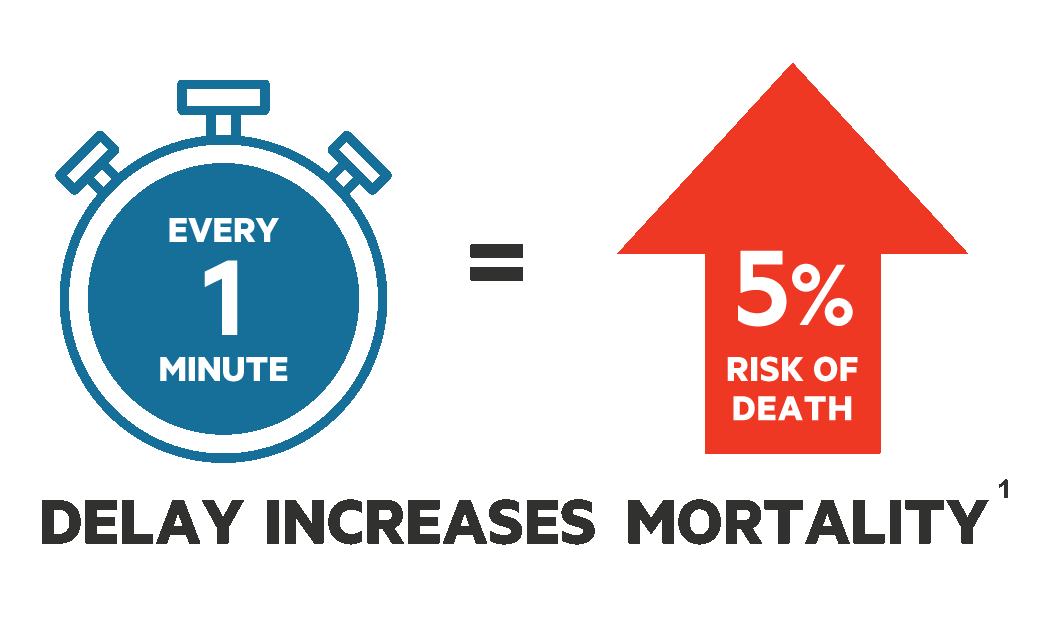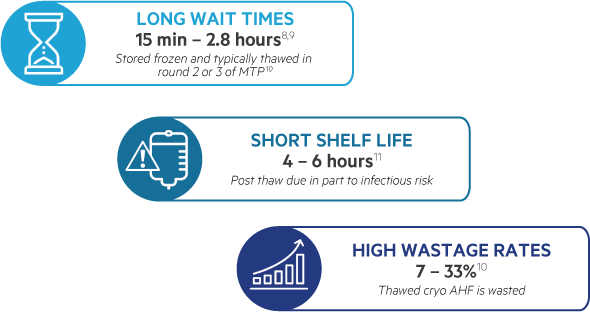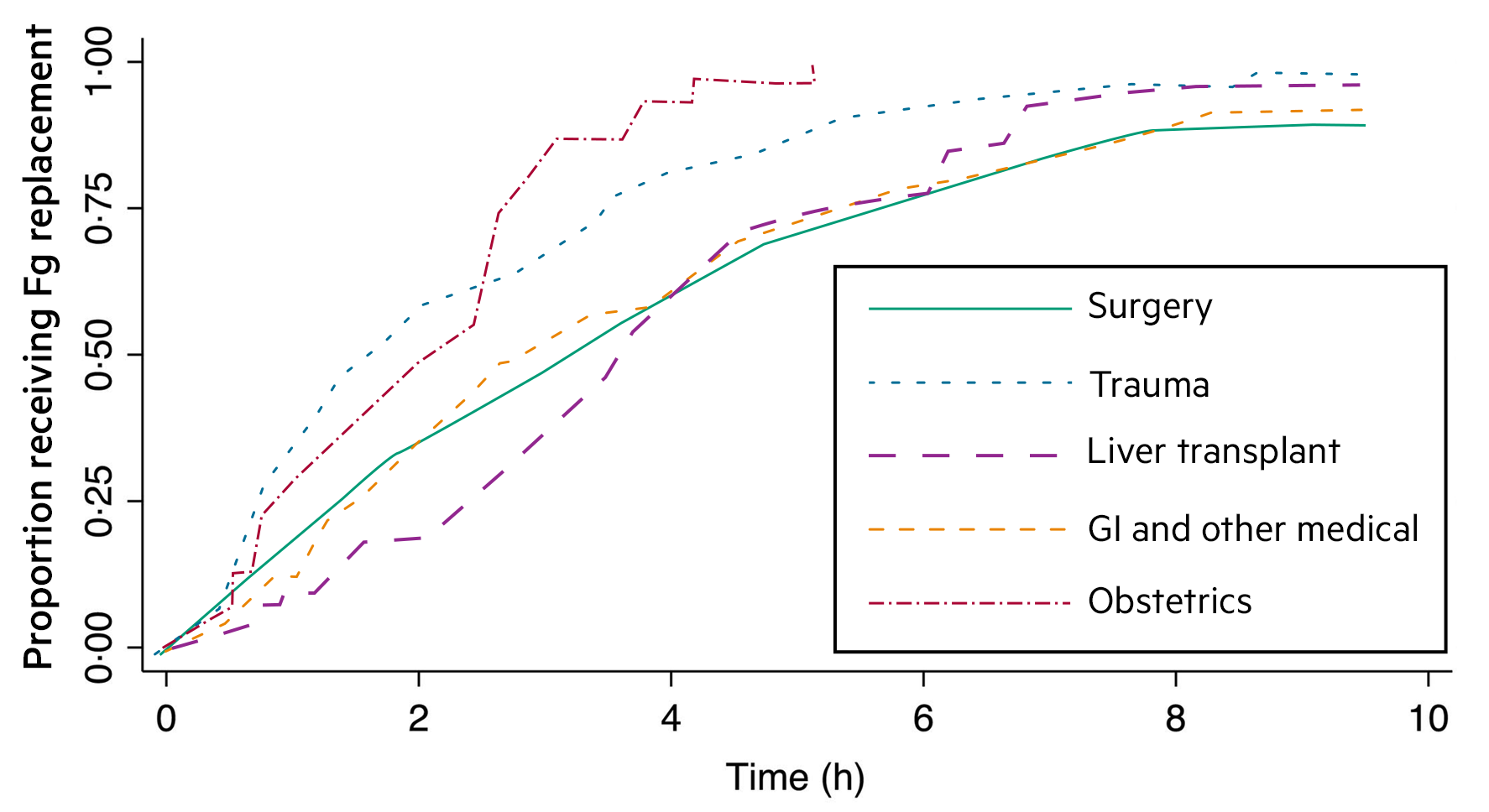Faster is Better in Hemorrhage Control
Time to hemorrhage control is critical when minutes mean blood loss.
Time to hemorrhage control is critical when minutes mean blood loss.
Every effort should be made to decrease the time to administration of the first blood products.1

Each minute of delay between the activation on an MTP and the arrival of the first blood products results in a 5% increase in the odds of mortality.1
Timely delivery of blood products is an important metric, similar to “door-to-balloon” time.1
Early Fibrinogen Supplementation Improves Patient Outcomes*
Early delivery of fibrinogen and other vital clotting factors add the clotting strength needed to achieve stable clot formation and restore hemostasis.2,3

*These results are based on studies evaluating cryo AHF. Results with IFC may vary.
Massive Transfusion Protocols (MTP) improve hemorrhage outcomes by delivering blood products quickly, but they lack critical components from the start.
In today’s MTP’s, sources of clotting factors (e.g. cryopreciptated Antihemophillic Factor (cryo AHF)) for the treatment of coagulaopathy in hemorrhage often arrive too late to be medically efficacious.7,8
MTPs Lack Critical Components from the Start
Cryoprecipitated AHF Inventory Challenges

In >75% of U.S. exsanguination cases,
cryo AHF arrives too late to be medically efficacious.7,8†
Delays Impact Cryoprecipitated AHF Utility
Time to issue cryoprecipitated AHF by patient type12

Trauma and OB earliest: median of 1.7 hours12
1.6 hours: Median time to death from exsanguination7
Availability of cryo AHF is delayed due to the time required to thaw, which is typically performed on demand as a result of its short 4-6 hour shelf life post-thaw, and therefore is established into later rounds of MTPs.8,9


